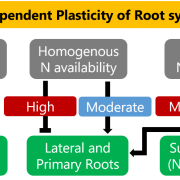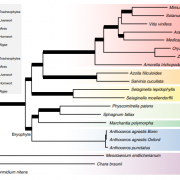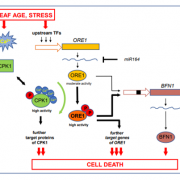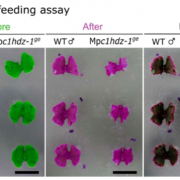
Recognizing Plant Physiology authors: Yunliu Zeng
Plant Physiology, Plant Physiology: Author ProfilesYunliu Zeng, first author of Sensory-directed Genetic & Biochemical Characterization of Volatile Terpene Production in Kiwifruit
Current Position: Associate Professor at Huazhong Agricultural University (HZAU), China
Education: Ph.D. and Master of Pomology at HZAU, China; BSc of Horticulture…

Recognizing Plant Cell authors: Lucas McKinnon
The Plant Cell, The Plant Cell: Author ProfilesLucas McKinnon, first author of Membrane Chaperoning of a Thylakoid Protease whose structural stability is modified by the Protonmotive force
Current Position: PhD candidate at University of California, Davis
Education: PhD in Plant Biology (expected March 2020), B.S. in Biological Sciences (UC Davis,…

Informational Interview with Sheng-Chieh Wu: A Journey of a Teaching Assistant
Profiles of Plant ScientistsInformational Interview by You-Wun Huang, ASPB Conviron Scholar
Sheng-Chieh Wu is a Teaching Assistant of the Department of Life Science, National Taiwan University (NTU), who is always passionate during his teaching. He earned his M.S. degree in NTU but struggled during his Ph.D., eventually chosen…

Review. Signalling pathways underlying nitrogen-dependent changes in root system architecture: from model to crop species (J. Exp. Bot.)
Plant Science Research WeeklyNitrogen (N) is one of the seventeen essential nutrients for a plant to complete its life cycle and is one of the most important determinants of productivity of various crops globally. Nitrate (NO3‑) and ammonium (NH4+) are the major plant-available forms of N. The spatiotemporal heterogeneity of N…

Hornwort genomes (Nature Plants)
Plant Science Research WeeklyA major update in plant genome information is taking place. Two independent groups have published genomes of hornwort species from the Anthoceros genus. Both papers arrive at similar conclusions supporting the model of a single “Setaphyta” clade, with hornworts sister to liverworts and mosses. These…

Roles for CHROMATIN REMODELING 4 in Arabidopsis floral transition (Plant Cell)
Plant Science Research WeeklyThe time at which flowers appear is critical for plant reproductive success. As such, the vegetative to reproductive growth transition is governed by several cues: environmental (photoperiod, temperature) and endogenous (gibberellins, age). Here, Sang et al. used an elegant forward-genetics approach…

The embryo sheath is an anti-adhesive structure that facilitates cotyledon emergence during germination in Arabidopsis ($) (Curr. Biol.)
Plant Science Research WeeklyThe embryo sheath is a glycoprotein structure formed during seed maturation in Arabidopsis thaliana. However, its function and its persistence after germination have been uncertain. Here, Doll et al. examined germination and seedling establishment of krs mutants deficient in the KERBEROS peptide that…

“The secret is how to die!”: CPK1 controls cell death via phosphorylation of ORE1 (Plant Cell)
Plant Science Research WeeklyCell death, like all other cellular processes, is controlled by a highly complex signaling network. A search for the targets of Arabidopsis calcium dependent protein kinase1 (CPK1) by Durian and co-workers has revealed that it phosphorylates ORESARA1 (ORE1), a master regulator of leaf senescence responses,…

How Marchantia polymorpha avoids bug bites (bioRxiv)
Plant Science Research WeeklyPlants took hundreds of million years to evolve from aquatic to land environments. Biotic and abiotic stress adaptation contributed to the transition. In this preprint, Romani et al. elucidated functions of the transcription factor CLASS I HOMEODOMAIN LEUCINE-ZIPPER (C1HDZ) in the early land plant Marchantia…

